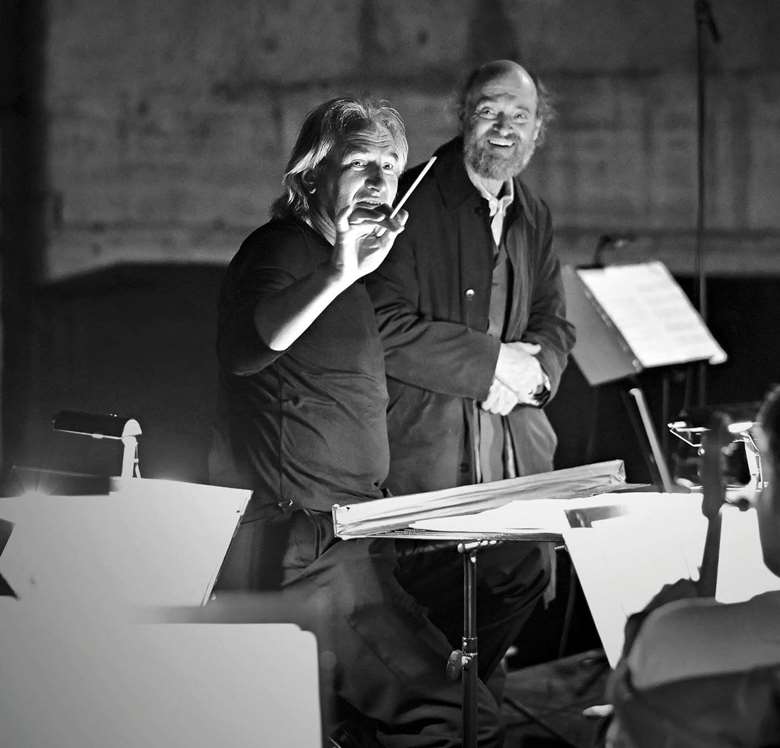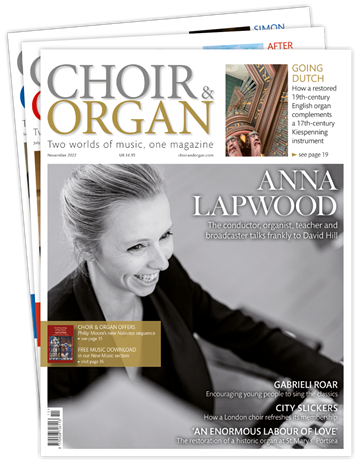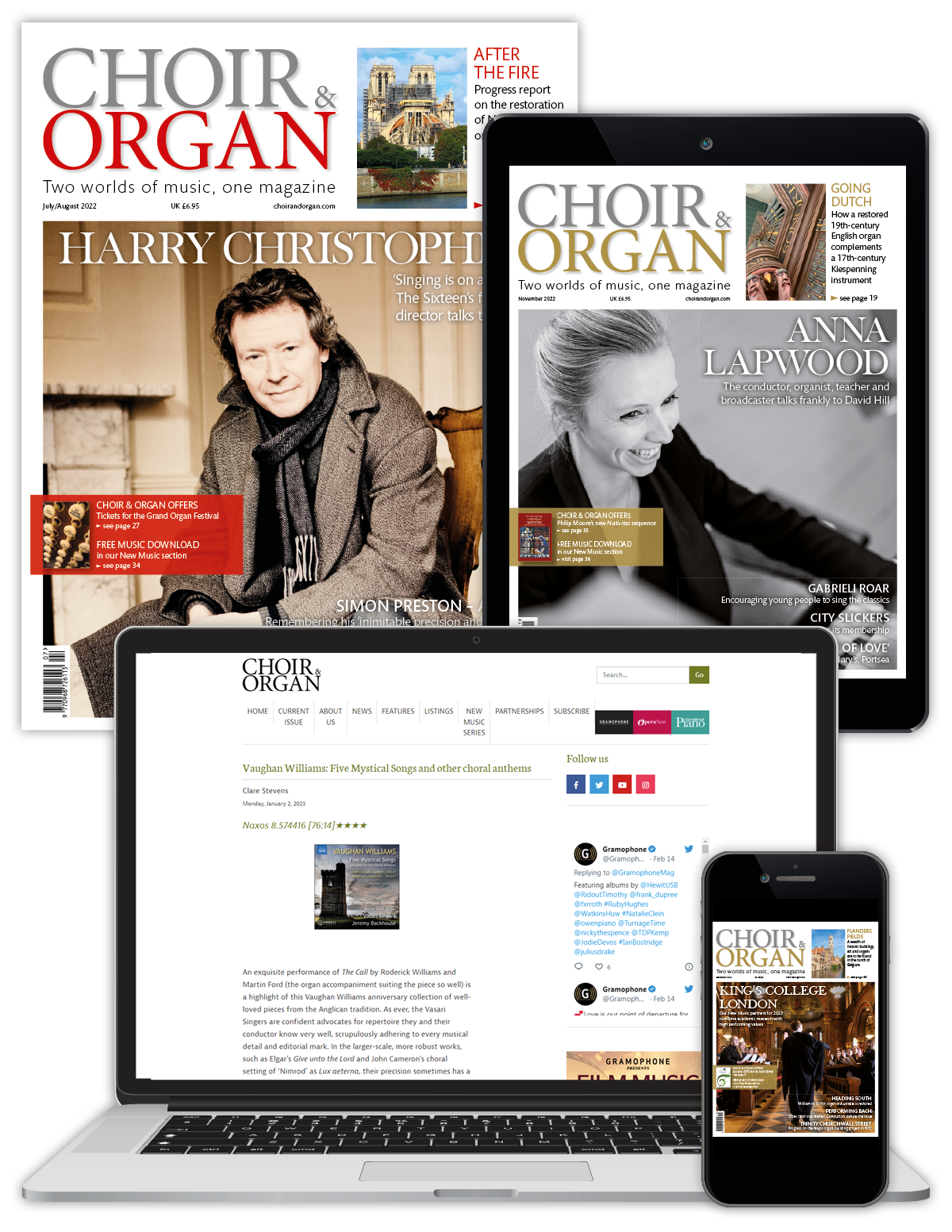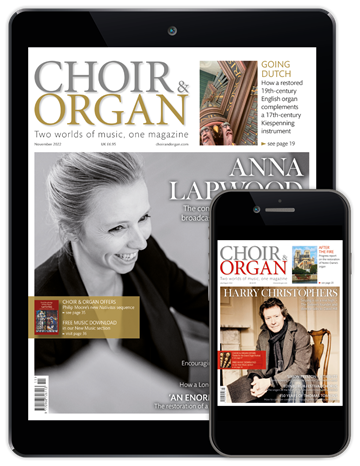In conversation with... Tõnu Kaljuste
David Hill
Friday, May 10, 2024
The Chief Conductor of the Tallinn Chamber Orchestra and Estonian Philharmonic Chamber Choir, Tõnu Kaljuste, talks to David Hill

DH: Welcome Tõnu! It’s great to be with you, speaking about the choral tradition in your native Estonia. What can you tell us about your earliest musical memories? Was your family musical?
TK: In my childhood, my father Heino Kaljuste was involved with the Ellerhein Children’s Choir in Tallinn. As well as conducting the children’s choir, he was a music educator who aimed to teach children to read music notes just as they read their native language from books. This was influenced by Zoltán Kodály. He introduced the Kodály method to Estonia and authored all the school music textbooks.
I began my musical studies as a pianist and also sang in my father’s children’s choir. I think that’s probably where my emotional connection to music comes from – from an early age, I observed how music was interpreted.
My mother worked at Estonian Radio and was not professionally involved in music. My sister pursued visual arts and became a book designer. She has also designed the visuals for several of my music releases.
DH: That’s really interesting about the focus on Kodály in your early musical development. The singing tradition itself in Estonia is world-famous: can you tell us why?
TK: Estonians began their choral singing tradition in 1869, following the example of the German culture. It was tied to the period of national awakening – the birth of self-awareness. During that time, many European nations sought to define themselves as cultural entities. Estonia began this within the framework of the Russian Empire which ultimately led to the establishment of its own state in 1918. Sufficiently strong cultural groundwork had been laid by then. Song festivals, heavily influenced by German culture, attracted large crowds.
Estonia’s older folk tradition, the runic song, has an even deeper origin. The revival of runic songs inspired Estonia’s second period of national awakening, which occurred upon gaining independence from the Soviet Union. While the president of our neighbouring country has stated that the collapse of the Soviet Union was the greatest catastrophe of the 20th century, for most Estonians, the birth of the Soviet Union was the greatest catastrophe of the 20th century and greatly limited our musical education. While the Moscow-Leningrad school was good, it lacked a broader perspective.
DH: Where did you study?
TK: I studied conducting in Tallinn and then spent two years at the Leningrad Conservatory. Besides my official education in Leningrad from 1976 to 1978, after founding a professional choir in 1981, I furthered my education with Swedish teachers such as Eric Ericson and Anders Öhrwall. Under Öhrwall’s guidance, I studied the interpretations of baroque music. Eric Ericson equipped me with insights into 20th century choral music and musical notation. Working with Swedish choirs, the Berlin Philharmonic and Claudio Abbado was also a great learning experience. I had the opportunity to prepare choirs for Abbado’s concerts with major works.
DH: That’s certainly an esteemed list of individuals. Who have been, or continue to be, your mentors and people you admire?
TK: The person who answered many of my questions in the field of conducting was Claudio Abbado. Every conductor is also taught by composers they collaborate with, and for me, those were Veljo Tormis and Arvo Pärt. Actually, I have admired many theatre directors because their work seems very close to me. Many wonders of musical theatre are my secret passion.
DH: Do you think choral music is in a good place in Estonia and beyond?
I am unable to separate choral music from ‘other’ music. I try to connect the world of instrumental music with vocal music, as I believe they complement each other. The a cappella choral music culture is a very important part of this, but my focus is primarily on the Tallinn Chamber Orchestra, the Estonian Philharmonic Chamber Choir and their collaboration. I believe that Estonian music is sufficiently vibrant thanks to these two composers, Arvo Pärt and Veljo Tormis, and because of them there has emerged a new generation of composers.
For me, the most important composer of early 20th century Estonian classical music is Cyrillus Kreek, whose connection to early Estonian folklore was continued by Veljo Tormis. Kreek integrated both old folklore and church music into his compositions. For me, Estonian choral music is based on the work of these significant composers. Additionally, there is Rudolf Tobias, who worked during Mahler’s time and whose compositions were predominantly in German, but who brought Estonian vocal music closer to European thought. We recently recorded the first Estonian oratorio written by him, and this recording should be released in 2025.
DH: And with regards to choral conducting, what are your priorities when rehearsing a professional choir?
TK: Naming priorities would imply a hierarchy that I follow most during rehearsal periods. In reality, there aren’t specific priorities in that sense. All qualities that make the music expressive and meet the composers’ intentions are considered crucial during rehearsals. Perhaps in the context of choral music, I might mention that I’ve aimed to choose singers who are also capable of performing as soloists – chamber singers. In the professional realm, a singer must possess a range of specific qualities to operate successfully. Sometimes we are so immersed in the creations of composers that it feels like our own music. I believe I strive for such organicity.
The main objective towards which I am working during the rehearsal period is to guide singers from the initial tasks of ‘grammar’ (where to place the word ending, where the diphthong occurs, etc.) towards the essence of music. Therefore, the primary goal is to achieve sensitivity necessary for conveying the essence of music. This enables me, as a conductor, to create a unique moment in music that is born here and now.
DH: Could you tell us about some of your favourite choral music?
TK: Favourite music, for me, is valuable and good music that I enjoy, rather than any particular era or composer. I’ve tried to avoid music that doesn’t resonate with me. Those scores where the composer has given each singer their own line are particularly appealing. To be honest, individual expression within a vocal ensemble is limited. That’s why it’s very powerful when composers provide opportunities for ensemble singers to depart from the main group and then return again. A certain theatricality in conveying collective expression (depending on the style of music) is important to me. It is what creates a unique connection with the audience. The Estonian Philharmonic Chamber Choir has also recorded files of the choir’s sound, which composers can use in their home studios.
The works of the masters of the Baroque era have laid a great foundation for articulating musical text – an experience we can also use in modern times. The Romantics have given us the opportunity to capture the beauty of cantilena colours. Masters of new composition techniques, starting from atonal music, engage our musical minds in directions that have not been needed in music history before. Throughout the season I try to compile repertoire in a way that these mentioned perceptions and thoughts can receive different ‘nourishment.’
DH: And music in general − are there composers you would find it difficult to live without?
TK: I believe I don’t have a single composer without whom it would be difficult for me to live, as the world is full of great creators. However, there have been significant composers on my journey, such as Kreek, Pärt and Tormis, who have contributed immensely to the uniqueness of my choir. I feel that when performing their works, we are in a uniquely sensitive position in the world, perceiving this music more deeply than, perhaps, the music of more distant cultures or lands. But if I had to highlight one composer, it would be Bach. I can’t imagine a world without Bach.
Now that I have reached the performance of Bach’s The Art of Fuge with the Tallinn Chamber Orchestra, I must admit that without knowing Bach’s vocal music, it is pointless to tackle this masterpiece. The entire articulation and content of Bach’s music have grown out of texts that have often been the basis for the creation of works, from chorales to instrumental concerts.
Music’s roots are in different cultural contexts for various composers but their interpretation of music can still complement each other. I felt this recently when preparing for the Estonian premiere of James MacMillan’s work Composed in August. James uses Scottish folk music. I have experience with Estonian music, such as that of Kreek and Tormis, which gives performers the opportunity to feel and colour the music departing from classical standards. As I browsed through MacMillan’s latest score, I was seized by the same passion to bring colours to his music from Scottish folk presentation traditions. I listened to a lot of Scottish folk music and found new ideas for MacMillan’s piece for its Estonian premiere.
DH: That’s fascinating to hear about the synergy between different cultural musical styles. Are there past special musical occasions you would like to share?
TK: One treasure trove in Estonian music is located in the Music and Theatre Museum, where I have found several works by Cyrillus Kreek that had not been performed and have made their way into the programs of many musicians thanks to these discoveries. Even the King’s Singers perform Kreek’s David’s Songs, which took some effort with my choir to introduce to the world.
In the museum there was the original manuscript of Rudolf Tobias’s oratorio Jonah which we recorded, and hopefully it will soon be available on the Ondine label. It should be noted that Tobias’s oratorio Jonah’s Mission in a revised version was presented to the public before the original. I asked Rasmus Puuri to finish Veljo Tormis’s unfinished opera Lalli. It received a successful performance at the Birgitta Festival. Now we are looking for opportunities to introduce it to the world.
The last vivid memory of presenting Estonian music outside of Estonia was this spring when we toured the Netherlands with Kreek’s music, based on Estonian poetry and folklore, and Tormis’s Estonian Calendar Songs, which were based on traditional folklore from the folk calendar. While I could also mention the success of Bach’s motets performed in Bach’s hometown... Valuable is everything we can preserve and perform from world music culture. But what is particularly special for me is when I can bring something new from my Estonian culture to the world’s stages, through which a small fragment of culture can add its own sounds to the world of music.
DH: What can you tell us about future musical plans?
In 2025, Arvo Pärt’s 90th birthday will be celebrated in many parts of the world. We, along with the Tallinn Chamber Orchestra and the Estonian Philharmonic Chamber Choir, will be on the move to perform Pärt’s diverse repertoire and celebrate his jubilee. In our calendar, there are also plans to commemorate future milestones such as those of Bruckner, Kurtag, and Henze.
This summer, I will present a Nargen Opera production featuring Philip Glass’s opera ‘Hydrogen Jukebox.’
It’s always pleasant to talk about events after they have taken place, so I’ll pause here to avoid revealing all our dreams prematurely...
DH: Thank you for this fascinating conversation, Tonu, and we look forward to hearing more about upcoming projects!
David Hill is musical director of the Bach Choir and Leeds Philharmonic Society, principal conductor of Yale Schola Cantorum, and associate guest conductor of Bournemouth Symphony Orchestra.
This article originally appeared in the Summer 2024 issue of Choir & Organ. Never miss an issue – subscribe today






